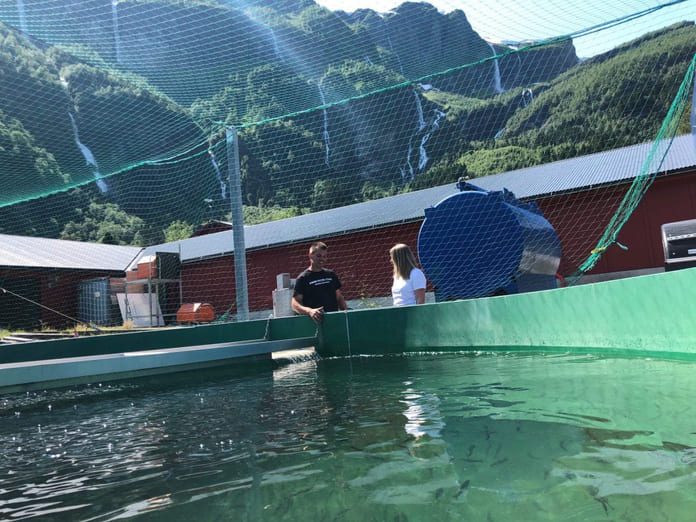Land-based facilities for smolt and food fish need a lot of energy to move water through pipes and tanks. It is power-intensive to farm on land – work that the ocean currents naturally take care of in open cages.
In the case of an old quarry in Espevik in Rogaland, the company Ecofisk has a planned industrial area of 300,000 square meters through a long-term lease agreement. Here they will produce 40,000 tonnes of salmon. When the entire Ecofisk plant is developed, it will need approximately 20 megawatts.
Power-intensive
To operate the first construction phase, approximately ten megawatts are needed. A rule of thumb is, according to the general manager of Ecofisk, Bjørn Inge Staalesen, that it takes between six and eight kWt (kilowatt hour) per kilogram of fish produced.

Other players are content with less power use.
“The power consumption with the technology we will use will be 2.5 kWt per kg of fish we produce. This is far below the average for the industry,” said breeder Petter Bakke in Smart Salmon to SalmonBusiness earlier this summer.
Regardless, electricity has become expensive in the last year.
Tuesday this week was the most expensive day of the year for electricity customers in southern Norway, with an average of NOK 1.10 per kilowatt hour excluding grid rent and fees.
Record expensive
Now the figures for August show that this was the most expensive month ever for Norwegian electricity customers, after a period of record high prices for CO2 quotas and unusually high prices for coal and gas that raise power prices in Europe.
The electricity price in Norway ended at NOK 0.68 per kilowatt hour excluding grid rent and fees, according to the Agder Energi-owned electricity company Entelios.
“It is a record for the season. It is expensive, and it is mainly due to the connection Southern Norway has with other countries and the record high German price level,” said director of power management Andreas Myhre in Entelios to E24.
“One has to go back to the winter of 2010 and 2011 to find equally high weekly prices in the statistics. An increase in the price of power on the continent and low inflows in Norway contribute to this”, NVE agreed in its weekly report.
Risk
A sunny and dry summer has lowered water reservoirs. However, summer is the low season for electricity consumption. In the winter, electricity consumption rises markedly – and usually brings with it higher prices.
The risk is on the upside, as it is called in the financial industry.
Given an electricity price of NOK 1 per kwt, it means, given Ecofisks above mentioned rule of thumb, NOK 6-8 (€0.6-0.8) in production costs per kilo of fish produced on land.



